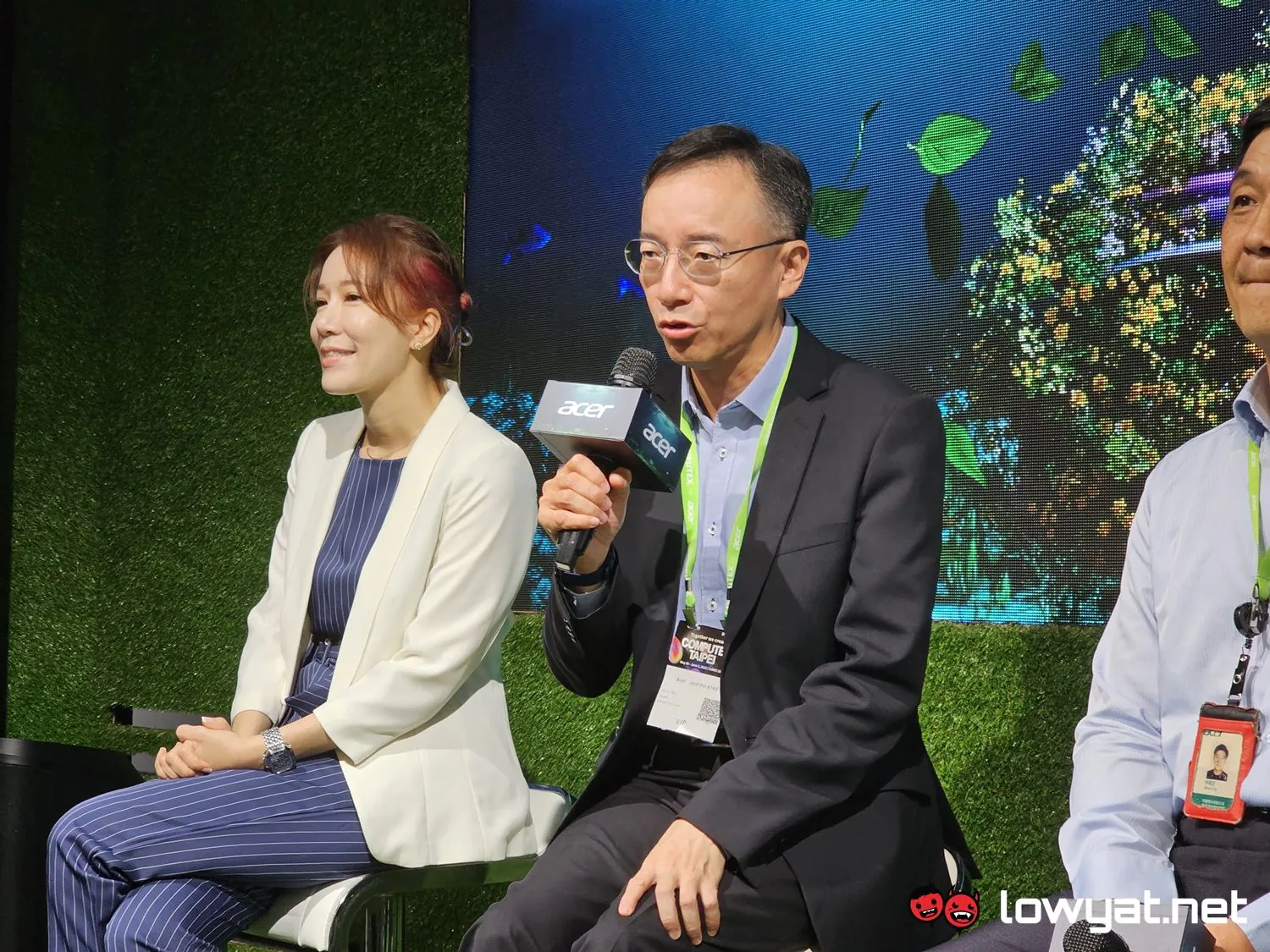Specifically, we asked if there was a portion of its PCR material included material harvested from unsold or surplus Acer stock. The question may seem a bold, but not unfair: harvesting material from old and unwanted stock would mean that the brand is also looking inwards, and that could allow them to break down components and materials, and therefore be repurposed for newer product. As an extra added bonus, doing this may essentially allow them to save on the overall cost.
The answer we received was a rather unconvincing “Yes and No”. James Lin, General Manager of Notebook Products Business fielded most of the questions on the subject of PCR, and the answer we received was within the realm of Acer being committed to the cause of using materials recycled from the ocean and land. That, by the way, was the “No” part of the question. As for the “Yes” part, we suspect that Acer couldn’t provide us with a straight answer is because it has something to do with Taiwanese regulations and that all materials sourced for its PCR initiative may need to meet certain prerequisites, which is not at all unreasonable. After all, the company can’t just use items without some form of oversight.
And that’s all Acer had to say to our broad question. A question as to why it only uses up to 40% PCR plastic in the construction of the Vero lineup came up, and not more. The answer to that was simply due to the structural integrity of the material as a whole – as it stands, 40% is the best it can do without compromising the build quality of the laptop’s chassis. Anything more than that, at this point, and the brand bears the risk of it falling apart or breaking down, and the last thing anyone would want is for their laptop to start crumbling down.

